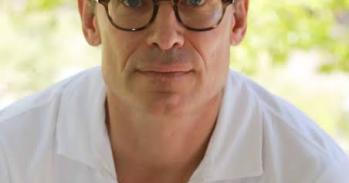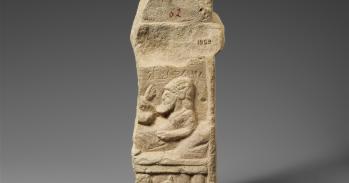Previously unseen archive footage has been made available online which shows student life in Cambridge at the start of the Second World War.
Previously unseen archive footage has been made available online which shows student life in Cambridge at the start of the Second World War.
Reminders of wartime can be seen in the background or looming overhead. Sandbags are deployed, evacuation drills are underway, cars are rare due to petrol rationing and RAF training planes soar in the skies above.
Shot by Malcolm Shaw of St John’s College in the early 1940s, the film gives a glimpse into what it was like to study and socialise while RAF training aircraft circled overhead and College lawns were given over to vegetables as part of the ‘dig for victory’ campaign.
The amateur film depicts typical scenes of Cambridge student life, with groups of undergraduates punting, walking to lectures and playing rugby. However, reminders of wartime can be seen in the background or looming overhead. Sandbags are deployed at St John’s, evacuation drills are underway, cars are rare due to petrol rationing and RAF training planes soar in the skies above. Malcolm Shaw, providing narration in 1989 to overlay the originally silent film, declared that ‘the planes were ever-present at this time of the war.’
The scenes recorded in this film reveal a Cambridge which seems largely unaffected by the war, though many of Shaw’s peers would soon take part in the conflict. Tracy Wilkinson, St John’s College Archivist, said ‘What we see in Shaw's film is the lighter side of College life. Despite his time at St John's coinciding with the outbreak of war, the sense of there still being time for leisure is evident.’
The film was given to the College following the death of Malcolm Shaw in 2003, where it will be preserved for future generations of researchers. It has now been made available online as part of a wider digitisation project in the Archives following a grant from the East of England Research Council.
Educated at a grammar school in West Yorkshire, Malcolm Shaw came up to St John’s to read Natural Sciences as an undergraduate in 1939, just as war was breaking out in Europe. Throughout his time in Cambridge, Shaw recorded short snapshots of student life and Cambridge scenery. Many of the sequences which flicker on the screen in both colour and black and white images dwell on the beauty and splendour of Cambridge, even as the shadows of war are lengthening over Britain.
These images range from sunny trips to Grantchester and Babraham, sporting events such as the 1941 Cuppers Final and tennis tournaments at Girton to students climbing New Court Tower and ice skating in front of it. Most interesting, and poignant, is the footage of RAF training in preparation for the war as well as the images of many of the lawns being dug up for the ‘dig for victory’ initiative. The insight we get from the footage not only reveals what Cambridge looked like during wartime, but how its students spent their days.
Part of the film’s timeless appeal lies in its ordinariness, showing students getting on with academic and social life and having fun despite the planes and signs of wartime. Despite the archaic fashions and rigid formality of the 1940s, with students wearing suits for punting on the river and being addressed by initials and surnames, the film reveals how little life has changed for many Cambridge students today.
Two of Shaw’s sequences show students including Shaw himself climbing iconic Cambridge buildings: not under cover of darkness as the infamous ‘Night Climbers of Cambridge’ did a decade earlier, but in broad daylight. Such activities were permitted during wartime as part of fire drills and evacuation training.
In 1989 Malcolm Shaw, who went on to work in the chemicals industry, edited the disparate snapshots into a 20-minute film and added a narrative commentary of his recollections. Shaw’s closing remarks reveal his nostalgic fondness for his student years: ‘What happy days those were’, he said, ‘and relatively carefree despite the background of a country at war’.
For more information about this story, please contact Ryan Cronin, rcc40@cam.ac.uk, 01223 338711.
This work is licensed under a Creative Commons Licence. If you use this content on your site please link back to this page.





